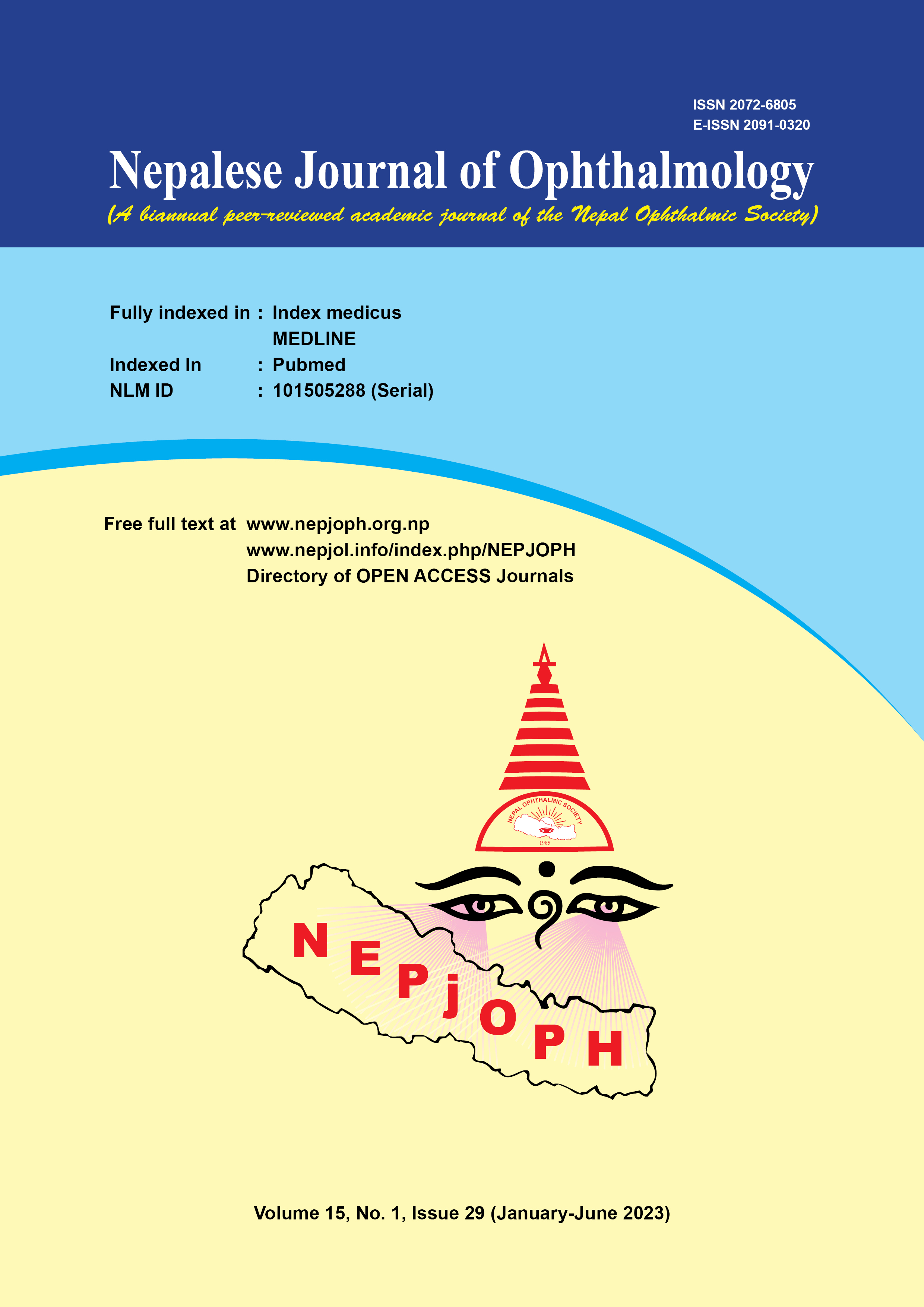Outcome of Optical Keratoplasty for Corneal Scar due to Infective Keratitis
DOI:
https://doi.org/10.3126/nepjoph.v15i1.40632Keywords:
Infective keratitis, Penentrating keratoplasty, Viral scarAbstract
Introduction: Corneal opacity is an important cause of blindness in developing countries.
Objectives: This study analyzes optical keratoplasty performed for corneal opacity due to infective keratitis.
Materials and methods: This is a retrospective study of all consecutive cases of optical keratoplasty performed between 2011 and 2014 (four-year period) for healed infective keratitis. Cases with less than two months’ followup were excluded during outcome evaluation. Comparison was made between keratoplasty for Microbial and Viral (herpetic) Scar.
Results: Ninety-three eyes of 93 patients were enrolled. Fifty-nine (63.4%) were male. Average age of patients was 38.9±19.5 years. Average donor endothelial cell count was 2713±434.5 cells/mm2. Fifty-four (58%) corneal scars were due to microbial keratitis and others were herpetic. Eighty-five (91.4%) had undergone penetrating keratoplasty. Eighty-eight (94.6%) cases were included for outcome analysis. Average follow-up duration was 37±27.5 months. Fifty-two (59%) had clear graft at their last visit. Twenty-three (26.1%) grafts had endothelial failure and 13 (14.7%) grafts failed due to late onset keratitis. Twenty-five (28.4%) had vision of ≥6/18. Rejection occurred in 24(27.2%) and glaucoma in 11(12.5%). Post-operatively viral keratitis in the graft occurred significantly more inViral Scar Group (38.6%, n=15) than in Microbial Scar Group (5.5%, n=3). But there was no significant difference in graft clarity, rejection, vision and secondary glaucoma between the two Groups.
Conclusion: Outcome of keratoplasty for post-infectious scars was found fairly satisfactory. Although occurrence of viral keratitis was higher in case of keratoplasty done for Viral Scars, the final result was similar to that of microbial scar.
Downloads
Downloads
Published
How to Cite
Issue
Section
License
Copyright (c) 2023 Nepalese Journal of Ophthalmology

This work is licensed under a Creative Commons Attribution-NonCommercial-NoDerivatives 4.0 International License.
This license enables reusers to copy and distribute the material in any medium or format in unadapted form only, for noncommercial purposes only, and only so long as attribution is given to the creator.




